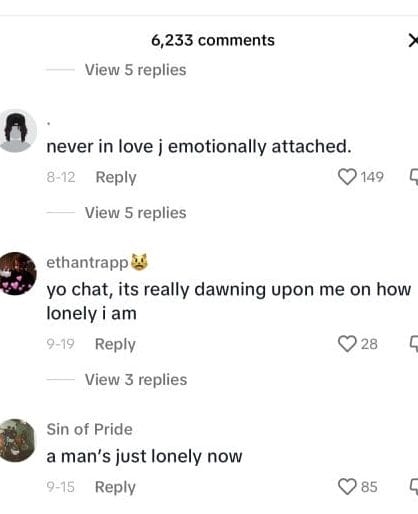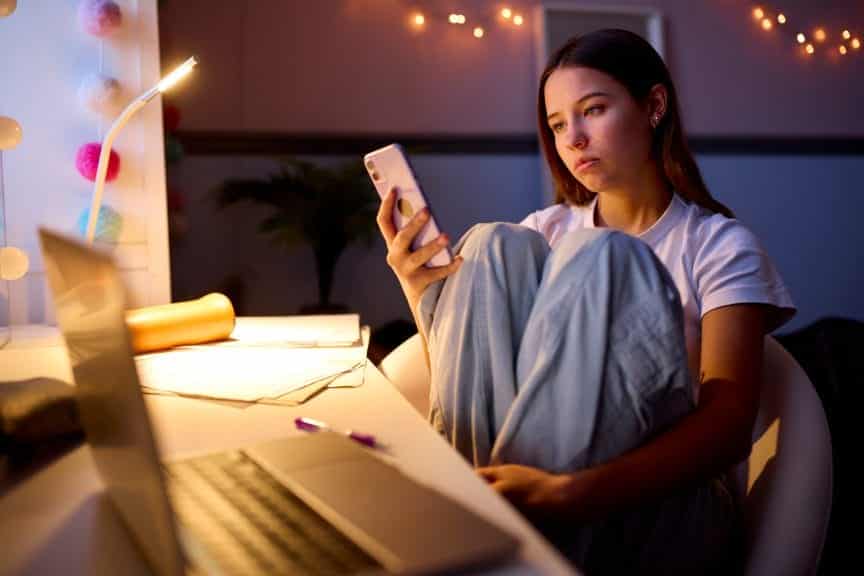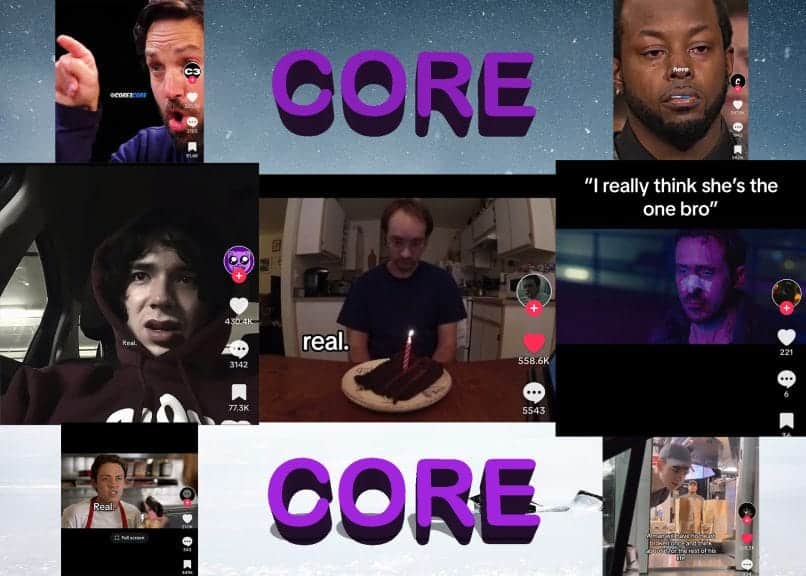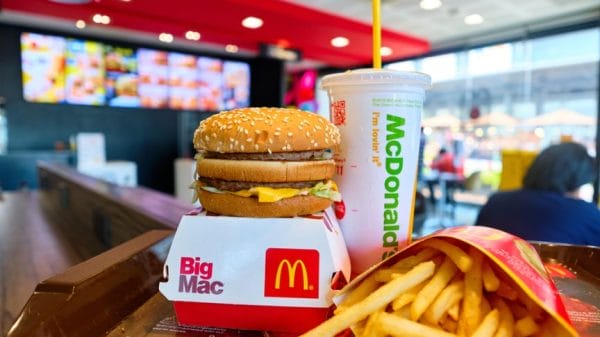If you’re a college student, you’ve probably seen a core-core video on your TikTok for your page before.
The phrase corecore, while not really making much sense, has become well-known in the app’s community. Attached are videos that compile clips from different movies, TV shows, random internet videos, podcasts, and even speeches.
At the same time, somber music is added to help the whole thing fit into a certain sadder aesthetic. Usually, the emotions of corecore videos stick to depressing and downhearted. You know, the kind of videos you’d see late at night, making you anxious or cry before falling asleep.
Here is an example of a corecore video from TikTok user @Realist.CoreCore:
There’s also hopecore TikTok!
Contrastingly, some corecore videos/users aim to improve a viewer’s mood and emotions. These are categorized as hopecore. Uplifting men’s and women’s mental health is a big topic for these videos. A bunch of happier clips coming together that focus on both genders being happy, aiming to help viewers feel better.
And then there are also videos of humans being good people. Handing out food to the homeless, giving strangers hugs when needed, and things of that nature. These spirit-lifting videos also fall under hopecore. Couple that with some heartfelt instrumentals and it’s a recipe for success.
Here’s an example of hopecore:
Overall, the corecore, well, I guess (insert name here)core, aesthetic and videos are a genre or side of TikTok aimed to make the viewer feel something. Undoubtedly, though, corecore reigns supreme as the most popular. Why does the college-aged TikTok audience like them so much? If there is already so much going on in their lives, watching a sad TikTok video might not be the best thing to do.
Why Would College Students Watch Corecore TikTok?
After looking into it, it makes sense why college students eat these videos up.
As I’ve mentioned, a compilation of clips evokes something out of the viewer. Now, what has this generation of college students grown up with? A constant stream of screens showing them movies, shows, videos, and alike.
Did the light bulb just click for you?
It’s just the way our world is. If there are videos with huge emotions attached to them, we will be drawn to it because that’s how we were all brought up. Remember those vet infomercials with the sad piano music and depressed animals showcased? Of course, you do. And our favorite episodes of TV shows and moments in movies tend to be the climactic ones where the emotions we feel from them are the strongest.
Corecore TikTok videos hit our emotions similarly, hell, I’m sure some college students can relate quite a bit to them. The loneliness, desolation, heartache, and anxiety college students feel can be captured in corecore content. If viewers have seen the clips before, they’re even more likely to watch it. This could trigger nostalgia, making us miss our past and even sadder.
Is There a Benefit to Watching Corecore TikTok?
Here are some comments from a corecore video I found by TikTok user: @onlypain.

Obviously, we can see that the video strikes them in some way, being relatable and making them sad.
Chances are, they were sad even before watching the corecore TikTok video. Research from a Healthy Minds Study in 2022 showed that over 60% of college students struggled with at least one mental health issue—things like anxiety, depression, isolation, etc. With TikTok’s audience being mostly college-aged, tons of the commenting accounts fall under that spectrum.
Why watch sad videos when you may also be sad? Wouldn’t that just make things worse? Well… no, actually.
You see, in a study by psychologist Nancy Sokarno, the opposite can happen. When watching sad, possibly traumatic, feeling-inducing videos or movies, our brain shoots for convalescent endorphins to combat the downer feelings. She can explain better than me: “Consuming depressing content can actually make you feel good [because] of [increased] endorphins.” (Sokarno).

Don’t bottle up the Feelings
In the same refinery article from the quote above, a girl named Shantelle was interviewed on why she watches stuff that makes her sad. Thinking of her breakup and eager to watch one of her favorite downcast shows, “I also wanted to relive the pain because I honestly just wanted to have a massive sob…” Good plan. Crying is a way to achieve catharsis, releasing all of those bottled-up feelings.
If a sad show could help with that, who’s to say that corecore TikTok isn’t doing that for college students now? It’s not healthy to hold all the tight stress, anxiety, and sad feelings in for long. In fact, even more psychologists chime in and agree that it’s healthy to get a good cry out often. And a fun fact is that the Japanese invest in “cry clubs” because they believe it to be good for us.
Good thing university students are well on their way to getting it out often. In a study done in 2020, 30% of junior girls cry once a day! And if it doesn’t come from the help of a sad video on TikTok, then at least we know the students crying are working very hard at school. One of the easiest ways to relieve stress and loosen up is to cry, so there’s a life hack for when you’re stuck on a hard assignment.

Don’t Scroll!
If you’re ever feeling down, and you cope with a dose of TikTok, perhaps try searching corecore sometime. It can help you get that cry out and back on track after a long day, a break-up, or if you’re missing home. Whatever it may be, if you’re a college student, know corecore isn’t there to make your life worse.














